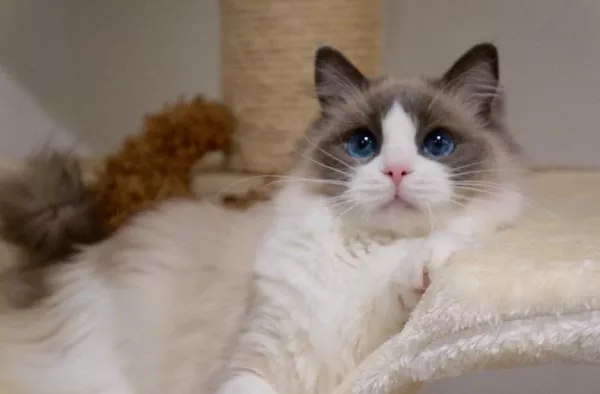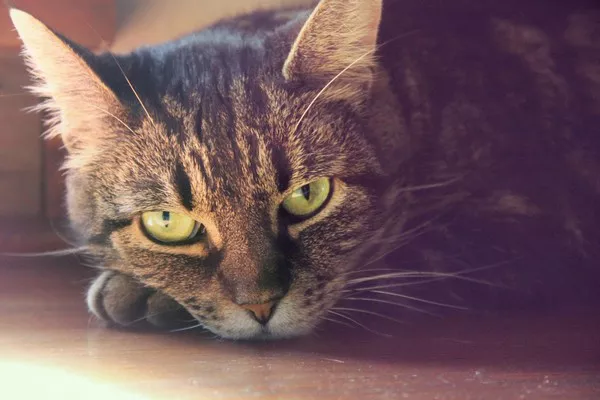Ragdoll cats are known for their affectionate nature, striking blue eyes, and silky fur. They are a popular breed among cat lovers, but with their unique characteristics comes the need for specific grooming practices. One common question among Ragdoll owners is whether these cats need regular baths. This article will explore the necessity of bathing Ragdolls and provide detailed grooming tips to ensure your feline friend stays healthy and beautiful.
Understanding the Ragdoll Breed
Origin and Characteristics
Ragdolls were developed in the 1960s by breeder Ann Baker in California. They are known for their large size, docile temperament, and tendency to go limp when picked up, which is how they got their name. Ragdolls are also recognized for their semi-longhair coat, which is soft and silky, making them a favorite among cat enthusiasts.
Coat and Shedding
The Ragdoll’s coat is one of its most distinguishing features. It is semi-long and comes in a variety of colors and patterns, including colorpoint, mitted, and bicolor. Despite their long fur, Ragdolls do not have an undercoat, which reduces the amount of shedding and matting compared to other long-haired breeds. However, their coat still requires regular maintenance to prevent tangles and keep it looking its best.
Do Ragdolls Need Baths?
Natural Grooming Habits
Like most cats, Ragdolls are generally good at grooming themselves. They use their tongues to clean their fur and keep it free from dirt and debris. However, there are circumstances where a bath may be beneficial or necessary.
When to Bathe Your Ragdoll
Excessive Dirt or Odor: If your Ragdoll has gotten into something messy or has an unusual odor that self-grooming cannot remove, a bath may be necessary.
Allergies: Some cats have allergies that cause them to over-groom or develop skin conditions. Bathing with hypoallergenic shampoo can help alleviate these symptoms.
Fleas and Parasites: If your Ragdoll has fleas or other parasites, a medicated bath can help eliminate these pests and provide relief.
Health Conditions: Certain health conditions, such as obesity or arthritis, may prevent your cat from grooming effectively, necessitating a bath.
Frequency of Bathing
While it is not typically necessary to bathe a Ragdoll frequently, doing so every few months can help keep their coat clean and reduce shedding. Over-bathing can strip the natural oils from their skin and fur, leading to dryness and irritation. It is important to strike a balance and only bathe your Ragdoll when needed.
Grooming Tips for Ragdolls
Brushing
Frequency
Brushing is an essential part of Ragdoll grooming. Due to their long, silky fur, brushing should be done at least two to three times a week. During shedding seasons, daily brushing may be required to manage loose fur and prevent matting.
Tools
Using the right tools can make a significant difference in the grooming process. Here are some recommended tools for brushing your Ragdoll:
Slicker Brush: Effective for removing loose fur and tangles.
Wide-Toothed Comb: Useful for detangling and reaching deeper layers of the coat.
Bristle Brush: Great for finishing and giving the coat a smooth, shiny appearance.
Technique
Start brushing from the head and move towards the tail, being gentle to avoid hurting your cat. Pay special attention to areas prone to matting, such as behind the ears, under the legs, and around the neck. If you encounter a mat, gently work it out with a comb or your fingers, being careful not to pull too hard.
See Also: What Color Eyes Do Calico Cat Have?
Bathing
Preparation
Before bathing your Ragdoll, gather all necessary supplies:
Cat-Specific Shampoo: Choose a gentle, hypoallergenic shampoo formulated for cats.
Large Towel: For drying your cat after the bath.
Non-Slip Mat: To place in the sink or tub to prevent slipping.
Brush: To remove any loose fur before bathing.
Steps for Bathing
Brush First: Remove any loose fur and tangles before getting your cat wet.
Fill the Tub: Fill the sink or tub with a few inches of lukewarm water.
Wet the Fur: Use a cup or sprayer to wet your cat’s fur, avoiding the face and ears.
Apply Shampoo: Gently massage the shampoo into the fur, starting from the neck and working down to the tail.
Rinse Thoroughly: Ensure all shampoo is rinsed out to prevent skin irritation.
Dry Your Cat: Wrap your cat in a large towel and gently pat dry. You can use a hairdryer on a low, cool setting if your cat tolerates it.
Nail Clipping
Regular nail clipping is important to prevent overgrowth and potential injuries. Use a cat-specific nail clipper and trim the tips of your Ragdoll’s nails every few weeks. Be cautious not to cut into the quick, the pink part of the nail that contains blood vessels and nerves.
Ear Cleaning
Check your Ragdoll’s ears regularly for dirt, wax buildup, or signs of infection. Use a damp cotton ball or a cat-specific ear cleaner to gently clean the outer part of the ears. Avoid inserting anything into the ear canal.
Dental Care
Oral hygiene is crucial for your Ragdoll’s overall health. Brush your cat’s teeth with a cat-specific toothbrush and toothpaste several times a week. Dental treats and toys can also help maintain oral health.
Eye Care
Ragdolls can be prone to tear staining. Use a damp cloth or a pet-safe wipe to gently clean around your cat’s eyes as needed. Regularly check for any signs of infection or irritation.
Health Benefits of Regular Grooming
Improved Skin and Coat Health
Regular grooming helps distribute natural oils throughout your Ragdoll’s coat, keeping it shiny and healthy. It also prevents matting, which can cause skin irritation and discomfort.
Early Detection of Health Issues
Grooming allows you to check for any unusual lumps, bumps, or skin issues that may require veterinary attention. Early detection can lead to more effective treatment and better outcomes for your cat.
Bonding Time
Grooming provides an excellent opportunity to bond with your Ragdoll. Many cats enjoy the attention and physical contact, which can strengthen your relationship and provide a sense of security and comfort for your pet.
Reduced Shedding and Hairballs
Regular brushing reduces the amount of loose fur in your home and minimizes the risk of hairballs. This is especially important for Ragdolls, given their long fur and tendency to groom themselves frequently.
Common Grooming Challenges and Solutions
Fear of Water
Many cats dislike water, making baths a challenge. To help your Ragdoll become more comfortable with bathing, start with short, positive experiences. Use treats and praise to create a positive association with the bath. Gradually increase the time spent in the water as your cat becomes more accustomed to the process.
Mats and Tangles
If your Ragdoll’s fur becomes matted, it can be painful to remove. Regular brushing is key to preventing mats. If you encounter a severe mat, you may need to use a mat splitter or seek professional grooming assistance.
Resistant Behavior
Some Ragdolls may resist grooming, especially if they are not used to it. Patience and positive reinforcement are essential. Start with short grooming sessions and gradually increase the duration as your cat becomes more comfortable. Offering treats and praise can help make the experience more enjoyable for your cat.
Allergies
If your Ragdoll has sensitive skin or allergies, choose grooming products formulated for sensitive skin. Hypoallergenic shampoos and conditioners can help prevent irritation and allergic reactions.
Professional Grooming
When to Seek Professional Help
While regular at-home grooming is important, there are times when professional grooming may be necessary. Consider taking your Ragdoll to a professional groomer if:
- Your cat has severe mats or tangles that are difficult to remove.
- You are unable to bathe your cat due to resistance or fear.
- Your cat has specific grooming needs, such as a lion cut or other specialized styles.
Choosing a Professional Groomer
When selecting a professional groomer, ensure they have experience with cats, especially long-haired breeds like Ragdolls. Look for groomers who use gentle, cat-friendly techniques and products. It’s also helpful to read reviews and ask for recommendations from other cat owners.
Benefits of Professional Grooming
Professional groomers have the expertise and tools to provide thorough grooming, including baths, haircuts, nail trims, and ear cleaning. They can also offer advice on maintaining your cat’s coat and overall health between grooming sessions.
Conclusion
Ragdolls, with their beautiful, silky coats and gentle personalities, make wonderful companions. While they do not typically require frequent baths, occasional bathing and regular grooming are essential to keeping them healthy and looking their best. By following the grooming tips outlined in this article, you can ensure your Ragdoll remains clean, comfortable, and happy.
Remember, each cat is unique, and their grooming needs may vary. Pay attention to your Ragdoll’s individual needs and preferences, and consult with your veterinarian or a professional groomer if you have any concerns or questions about your cat’s grooming routine. With proper care and attention, your Ragdoll will thrive and continue to bring joy and companionship into your life.

























